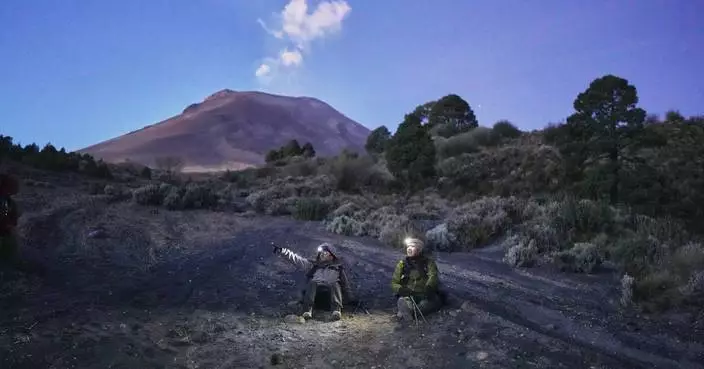Robot Pepper can tell jokes, show sympathy, lean in towards the runner and change eye colour to express emotion.
Scientists have developed a robot personal trainer to coach runners through an exercise programme on the treadmill.
Humanoid robot Pepper can tell jokes, show sympathy, lean in towards the runner and change eye colour to express different emotions.
The support is personalised based on the gym-goer’s heart rate, speed, personality type, mood and fitness level.
Pepper gained its social intelligence by being trained by a human fitness instructor on how to be an encouraging coach.
It learned when to offer praise during a workout and the cues that can motivate a runner to improve performance.
The robot was developed as part of a study led by human-robot interaction experts from Bristol Robotics Laboratory.
As part of the research, 10 people participated in sessions with the robot in a gym at the University of the West of England (UWE Bristol).
The group, aged between their 20s and 60s, attended three times per week for three months and were guided through the NHS Couch to 5K programme.
Human-robot interaction expert Katie Winkle said: “We wanted to test if we could transfer the intelligence of our fitness instructor, an expert with the know-how to get the best out of clients, into a robot so it could become an effective personal coach.
“We aimed to create an engaging motivational companion to get our runners through Couch to 5k, which is quite a long and drawn out exercise programme.”
Participants received guidance from two different versions of the robot.
The first was pre-programmed and gave standard instructions every 30 seconds based on the runner’s performance.
The second was a bespoke form of the robot that had been given input from a UWE Bristol fitness instructor.
Pepper observed the fitness instructor motivating runners and replicated his behaviours.
Results showed runners preferred engaging with the socially intelligent, human-like robot and performed better with it.
Miss Winkle said: “Understandably, they weren’t sure what to expect and when they started it was a bit of novelty.
“Some were energised by the robot and pushed themselves more than normal, and our fitness instructor was impressed with what the robot had learned to do.
“As time wore on, the participants began to treat the robot as a companion and the fitness instructor saw the robot as a colleague.
“This is really promising when we think about how robots might be used in the workplace in the future to work alongside humans.”
Researchers say the study was the first of its kind to feature significant participation from a human expert in a field.
The UWE fitness instructor was involved in designing Pepper’s actions, teaching it and then assisting with evaluation.
It is also rare for a research project to involve people interacting with a robot consistently over such a long time, the researchers say.
Dr Severin Lemaignan, senior research fellow at Bristol Robotics Laboratory, said: “Our work shows a robot could be really useful in the gym, especially for people who would perhaps feel embarrassed with a human personal trainer.
“It’s great to see the robot was considered a colleague by our gym coach: the robot helps provide better support to the gym clients; he doesn’t see it as a threat to his role.
“More widely, the study demonstrated the potential for robots to be useful and effective in the real world, with many potential applications.”
Bristol Robotics Laboratory is a collaborative partnership between UWE Bristol and the University of Bristol.
CARACAS, Venezuela (AP) — Venezuela’s opposition supporters have long hoped for the day when Nicolás Maduro is no longer in power — a dream that was fulfilled when the U.S. military whisked the authoritarian leader away. But while Maduro is in jail in New York on drug trafficking charges, the leaders of his repressive administration remain in charge.
The nation's opposition — backed by consecutive Republican and Democratic administrations in the U.S. — for years vowed to immediately replace Maduro with one of their own and restore democracy to the oil-rich country. But U.S. President Donald Trump delivered them a heavy blow by allowing Maduro’s vice president, Delcy Rodríguez, to assume control.
Meanwhile, most opposition leaders, including Nobel Peace Prize winner María Corina Machado, are in exile or prison.
“They were clearly unimpressed by the sort of ethereal magical realism of the opposition, about how if they just gave Maduro a push, it would just be this instant move toward democracy,” David Smilde, a Tulane University professor who has studied Venezuela for three decades, said of the Trump administration.
The U.S. seized Maduro and first lady Cilia Flores in a military operation Saturday, removing them both from their home on a military base in Venezuela’s capital, Caracas. Hours later, Trump said the U.S. would “run” Venezuela and expressed skepticism that Machado could ever be its leader.
“She doesn’t have the support within, or the respect within, the country,” Trump told reporters. “She’s a very nice woman, but she doesn’t have the respect.”
Ironically, Machado's unending praise for the American president, including dedicating her Nobel Peace Prize to Trump and her backing of U.S. campaigns to deport Venezuelan migrants and attack alleged drug traffickers in international waters, has lost her some support at home.
Machado rose to become Maduro's strongest opponent in recent years, but his government barred her from running for office to prevent her from challenging — and likely beating — him in the 2024 presidential election. She chose retired ambassador Edmundo González Urrutia to represent her on the ballot.
Officials loyal to the ruling party declared Maduro the winner mere hours after the polls closed, but Machado's well-organized campaign stunned the nation by collecting detailed tally sheets showing González had defeated Maduro by a 2-to-1 margin.
The U.S. and other nations recognized González as the legitimate winner.
However, Venezuelans identify Machado, not González, as the winner, and the charismatic opposition leader has remained the voice of the campaign, pushing for international support and insisting her movement will replace Maduro.
In her first televised interview since Maduro's capture, Machado effusively praised Trump and failed to acknowledge his snub of her opposition movement in the latest transition of power.
“I spoke with President Trump on Oct. 10, the same day the prize was announced, not since then,” she told Fox News on Monday. “What he has done as I said is historic, and it’s a huge step toward a democratic transition.”
U.S. Secretary of State Marco Rubio on Sunday seemed to walk back Trump's assertion that the U.S. would “run” Venezuela. In interviews, Rubio insisted that Washington will use control of Venezuela’s oil industry to force policy changes, and called its current government illegitimate. The country is home to the world’s largest proven crude oil reserves.
Neither Trump nor Rodríguez have said when, or if, elections might take place in Venezuela.
Venezuela’s constitution requires an election within 30 days whenever a president becomes “permanently unavailable” to serve. Reasons listed include death, resignation, removal from office or “abandonment” of duties as declared by the National Assembly. That electoral timeline was rigorously followed when Maduro’s predecessor, Hugo Chávez, died of cancer in 2013.
On Tuesday, U.S. Sen. Lindsey Graham, a close Trump ally who traveled with the president on Air Force One on Sunday, said he believes an election will happen but did not specify when or how.
“We’re going to build the country up – infrastructure wise – crescendoing with an election that will be free,” the South Carolina Republican told reporters.
But Maduro loyalists in the high court Saturday, citing another provision of the constitution, declared Maduro's absence “temporary” meaning there is no election requirement. Instead, the vice president — which is not an elected position — takes over for up to 90 days, with a provision to extend to six months if approved by the National Assembly, which is controlled by the ruling party.
In its ruling, Venezuela’s Supreme Court made no mention of the 180-day limit, leading to speculation that Rodríguez could try to cling to power as she seeks to unite ruling party factions and shield it from what would certainly be a stiff electoral challenge.
Machado on Monday criticized Rodríguez as “one the main architects of torture, persecution, corruption, narco-trafficking … certainly not an individual that can be trusted by international investors.”
Even if an election takes place, Machado and González would first have to find a way back into Venezuela.
González has been in exile in Spain since September 2024 and Machado left Venezuela last month when she appeared in public for the first time in 11 months to receive her Nobel Prize in Norway.
Ronal Rodríguez, a researcher at the Venezuela Observatory in Colombia’s Universidad del Rosario, said the Trump administration's decision to work with Rodríguez could harm the nation's “democratic spirit.”
“What the opposition did in the 2024 election was to unite with a desire to transform the situation in Venezuela through democratic means, and that is embodied by María Corina Machado and, obviously, Edmundo González Urrutia,” he said. “To disregard that is to belittle, almost to humiliate, Venezuelans.”

A government supporter holds an image of President Nicolas Maduro during a women's march to demand his return in Caracas, Venezuela, Tuesday, Jan. 6, 2026, three days after U.S. forces captured him and his wife. (AP Photo/Matias Delacroix)

In this courtroom sketch, Venezuelan President Nicolas Maduro, left, and his wife, Cilia Flores, second from right, appear in Manhattan federal court with their defense attorneys Mark Donnelly, second from left, and Andres Sanchez, Monday, Jan. 5, 2026, in New York. (Elizabeth Williams via AP)

FILE - Venezuelan Vice President Delcy Rodriguez smiles during a press conference at the Miraflores presidential palace in Caracas Venezuela, Nov. 18, 2024. (AP Photo/Ariana Cubillos, File)












